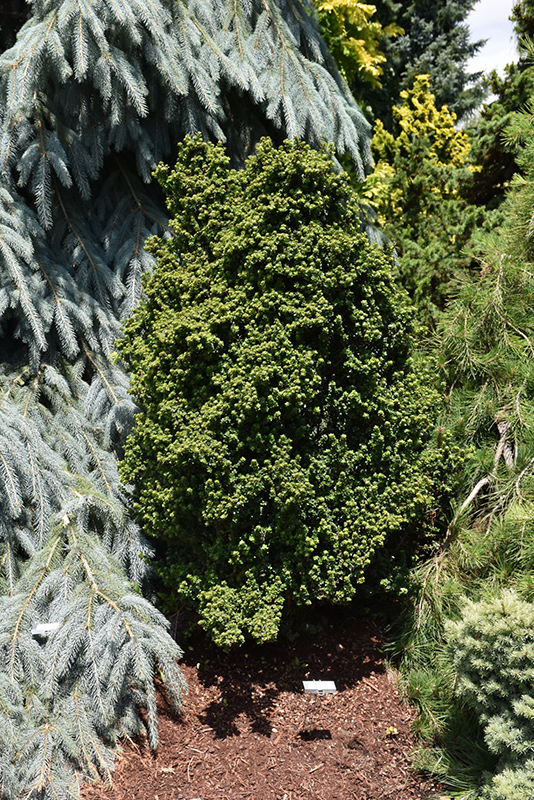Dwarf Pagoda Japanese Holly
Description
An absolutely stunning dwarf, dense and tightly compact evergreen shrub with tiny foliage and a wonderfully artistic habit of growth, glossy black berries if planted with a male variety; uses are endless, let your imagination run wild
Landscape Attributes
Dwarf Pagoda Japanese Holly is a dense multi-stemmed evergreen shrub with a stunning habit of growth which features almost oriental horizontally-tiered branches. It lends an extremely fine and delicate texture to the landscape composition which should be used to full effect.
Dwarf Pagoda Japanese Holly is recommended for the following landscape applications;
Planting & Growing
Dwarf Pagoda Japanese Holly will grow to be about 18 inches tall at maturity, with a spread of 24 inches. It tends to fill out right to the ground and therefore doesn't necessarily require facer plants in front. It grows at a slow rate, and under ideal conditions can be expected to live for 50 years or more. This is a female variety of the species which requires a male selection of the same species growing nearby in order to set fruit.
This shrub does best in full sun to partial shade. It prefers to grow in average to moist conditions, and shouldn't be allowed to dry out. It is very fussy about its soil conditions and must have rich, acidic soils to ensure success, and is subject to chlorosis (yellowing) of the foliage in alkaline soils. It is highly tolerant of urban pollution and will even thrive in inner city environments. Consider applying a thick mulch around the root zone in winter to protect it in exposed locations or colder microclimates. This is a selected variety of a species not originally from North America.
Dwarf Pagoda Japanese Holly makes a fine choice for the outdoor landscape, but it is also well-suited for use in outdoor pots and containers. It is often used as a 'filler' in the 'spiller-thriller-filler' container combination, providing the canvas against which the thriller plants stand out. Note that when grown in a container, it may not perform exactly as indicated on the tag - this is to be expected. Also note that when growing plants in outdoor containers and baskets, they may require more frequent waterings than they would in the yard or garden. Be aware that in our climate, this plant may be too tender to survive the winter if left outdoors in a container. Contact our experts for more information on how to protect it over the winter months.

